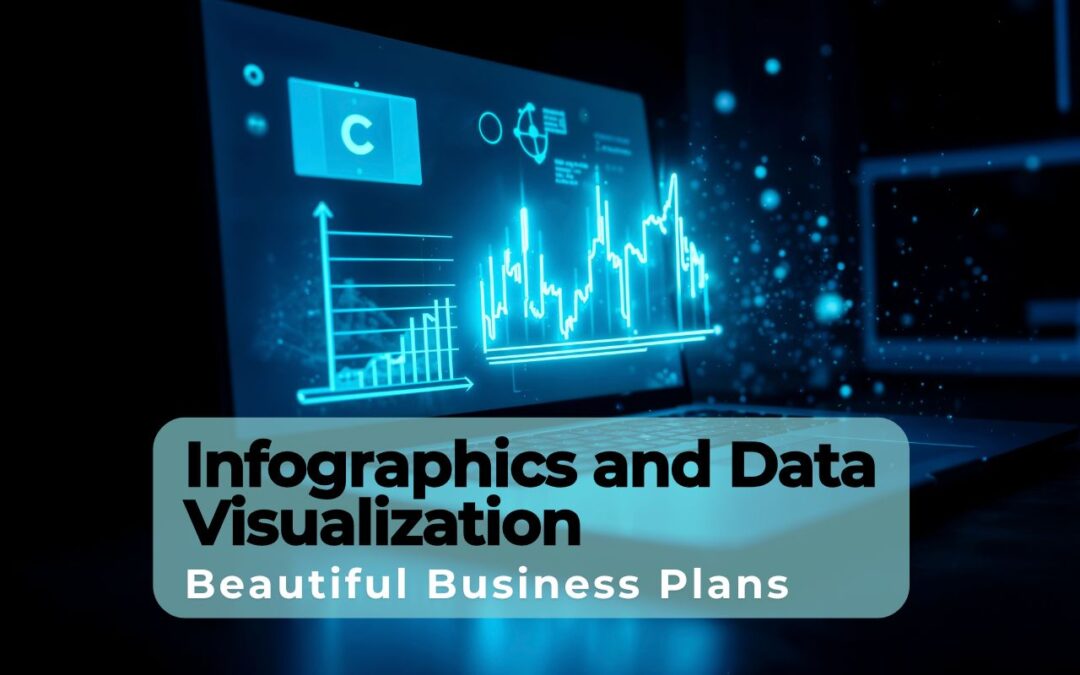In today’s increasingly visual world, the art of communicating ideas effectively has transformed dramatically. Whether you’re pitching to investors, presenting to stakeholders, or outlining your strategy internally, the way information is packaged can make or break your business plan’s impact. One of the most powerful tools at your disposal is data visualization, especially when combined with thoughtfully designed infographics.
A beautiful business plan is more than just a well-structured document; it’s a compelling narrative that blends text with visuals to tell a clear, persuasive story. Visuals don’t just enhance aesthetics — they improve comprehension, retention, and persuasion. In this article, we’ll explore why and how infographics and data visualization are essential in business plans, the psychology behind visual learning, types of visuals to consider, and practical strategies to implement them effectively.
The Power of Visual Communication in Business Planning
Humans are naturally visual beings. Over 65% of the population are visual learners, according to cognitive science studies. Our brains process visual information 60,000 times faster than text. When complex data or ideas are transformed into visuals, they become easier to digest, remember, and act upon.
In the context of business plans, this matters immensely. Traditional plans filled with paragraphs of dense data can bore or overwhelm readers. However, a business plan that uses charts, diagrams, and infographics and data visualization can highlight key insights at a glance, making the pitch clearer and more persuasive.
Why Use Infographics and Data Visualization?
1. Enhances Understanding
Infographics simplify complexity. They transform large datasets or abstract ideas into visual stories that are easy to follow. For example, rather than describing market segmentation in text, a pie chart or Venn diagram provides instant clarity.
2. Increases Retention
According to research in educational psychology, people retain 80% of what they see, compared to just 20% of what they read and 10% of what they hear. By using well-designed visuals in your business plan, your key points are more likely to be remembered by your audience.
3. Builds Professional Appeal
A polished, visually balanced business plan conveys professionalism and attention to detail. It subtly demonstrates that the team behind the plan is thoughtful and design-conscious — qualities that matter to investors and decision-makers.
4. Emphasizes Key Metrics
Business plans typically include critical data — revenue forecasts, market size, customer segments, cost breakdowns. Rather than bury these in blocks of text or spreadsheets, turning them into visual highlights ensures they stand out.
Types of Visuals You Can Use in Business Plans
- Timelines
To show startup milestones, product launch phases, or funding rounds. They bring chronological clarity to development plans. - Bar and Column Charts
Ideal for financial data like revenue projections, operating costs, or sales figures. They allow easy comparison across periods. - Pie Charts and Donuts
Useful for showing proportions — for example, how different segments contribute to your total market or expense distribution. - Maps
These are especially effective when your business is location-based. Use them to visualize market presence, logistics networks, or expansion opportunities. - Icons and Illustrations
Icons break up text-heavy content and help readers grasp concepts like customer demographics or service features at a glance. - SWOT Visuals
Rather than listing strengths, weaknesses, opportunities, and threats in plain text, a quadrant graphic makes the analysis more digestible. - Customer Journey Maps
These show the steps a customer takes from awareness to purchase, helping investors understand your strategy for attracting and retaining users. - Organizational Charts
When you need to show your management structure or team responsibilities, an org chart is a clean and effective format. - Financial Infographics
Infographics can combine multiple financial elements — revenue, burn rate, runway — into a single engaging visual story.
How to Integrate Visuals in a Business Plan Seamlessly
1. Balance Visuals and Text
A business plan should still be a narrative document. Visuals should support, not replace, key messages. Use them to reinforce important points, not to overwhelm the reader with flashy graphics.
2. Consistency in Style
Using a consistent color palette, font size, and visual style across the plan enhances cohesion and aesthetic harmony. This makes the plan look intentional and professionally crafted.
3. Use Visuals Strategically
Prioritize visuals where data is complex, comparisons are being made, or attention needs to be drawn. A visual should serve a purpose, not just fill space.
4. Emphasize Storytelling
Every visual element should be part of the story you’re telling — whether that’s your market opportunity, your product’s uniqueness, or your growth path.
Psychology Behind Visual Business Plans
Visuals leverage our dual-coding system — where information is stored in both verbal and visual formats. This reinforces memory and understanding. Cognitive Load Theory also supports the idea that visuals reduce mental strain by presenting information in an organized, digestible form.
Moreover, behavioral economics suggests that visuals influence decision-making. A well-placed, compelling infographic can trigger emotional responses, helping the reader connect with your vision and believe in your business.
The Impact of Visuals on Investor Engagement
Investors, particularly venture capitalists and angel investors, receive countless business plans every week. Most admit to skimming rather than reading each one in depth. This is where visuals become a strategic asset.
A visually optimized business plan:
- Saves time for the reader by highlighting key takeaways
- Builds trust by conveying transparency and clarity
- Improves pitch memory — increasing the chance of a follow-up or meeting
- Creates emotional impact through compelling design
In fact, in a survey conducted among startup investors, over 75% admitted they were more likely to fully read a business plan that included clear visuals, especially when reviewing multiple plans in a short time.
Visual Mistakes to Avoid in Business Plans
While visuals can elevate your business plan, misusing them can backfire. Common mistakes include:
- Over-cluttering: Cramming too many visuals can distract or confuse readers.
- Poor resolution: Low-quality graphics undermine the professionalism of your document.
- Misleading scales: Manipulating graphs to exaggerate growth may look impressive but damages credibility.
- Inconsistent design: Jumping between different styles or themes disrupts flow and looks chaotic.
- Visuals without context: Always accompany graphics with a brief explanation to provide clarity.
When and Where to Include Infographics
Strategically placed visuals can transform each section of your business plan:
- Executive Summary: Include a one-page snapshot of your business model, market opportunity, and revenue forecasts.
- Market Analysis: Use charts to show trends, market size, and growth potential.
- Competitive Landscape: A matrix or infographic comparing your strengths with competitors can help set you apart.
- Marketing and Sales Strategy: Visual funnels or process flows explain customer acquisition strategies more clearly.
- Financial Projections: Line graphs and bar charts are far more compelling than pages of spreadsheets.
Real-World Examples of Visual Transformation
Imagine two versions of the same business plan:
Plan A:
Five pages of plain text explaining market trends, customer segments, and expected growth.
Plan B:
The same content — but broken up with a pie chart showing market share, a customer persona infographic, and a bar graph displaying projected growth.
Which plan would you spend more time reading? Research shows that visuals can increase reading time by over 80% when they are engaging and support the narrative.
Final Thoughts: The Visual Edge in Business Planning
In a business world driven by attention economy and cognitive efficiency, visual storytelling is no longer optional. It’s essential.
Infographics and data visualizations aren’t just design accessories; they are tools of persuasion, understanding, and memorability. When thoughtfully incorporated, they elevate your business plan into a powerful communication asset — one that not only informs but inspires.
By embracing the power of visuals, entrepreneurs can create business plans that resonate deeply, stand out from the crowd, and ultimately increase their chances of success.













